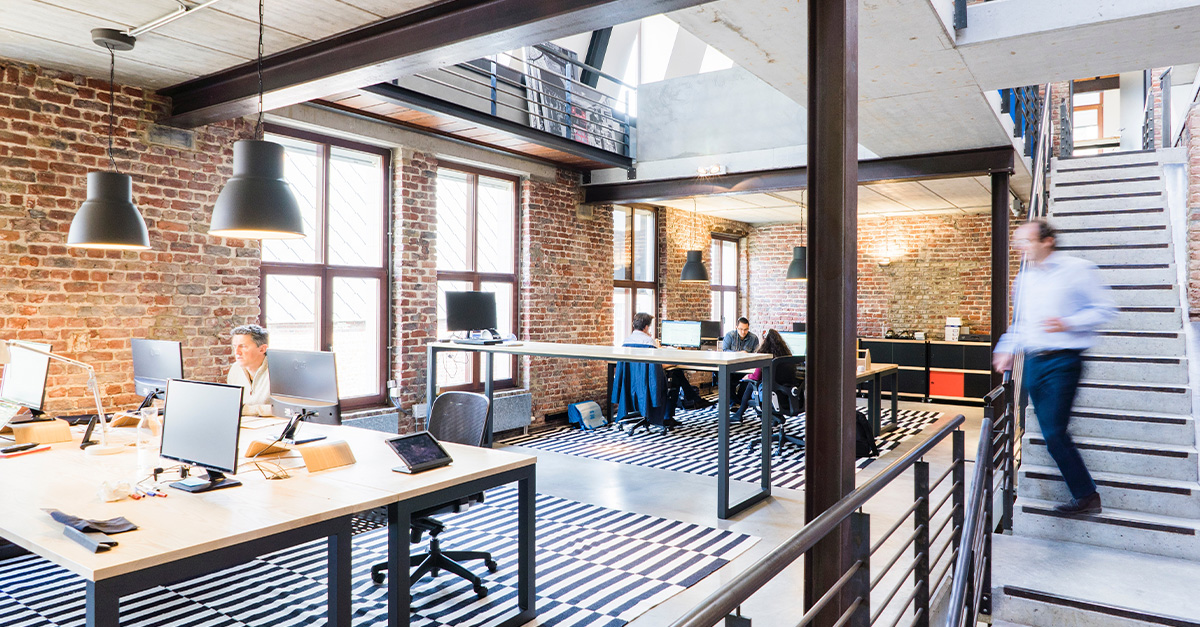8 min read
Application Modernization: An Overview
Application modernization is essential in today's rapidly evolving technological landscape. As businesses strive to keep up with the latest...
In today's rapidly changing technological landscape, many business organizations are revaulating their legacy applications in order to stay competitive and meet the evolving needs of their customers.
These legacy applications, built on outdated technologies, can hinder innovation and agility. In order to stay competitive in the age of digital transformation, modernizing legacy applications is crucial.
Legacy applications, also known as legacy systems, refer to software applications that were developed on outdated technologies and frameworks. These applications often run on old hardware and have outdated user interfaces.
With the rapid advancement of technology, organizations are increasingly facing challenges in maintaining and sustaining these legacy systems to meet the demands of the digital business era. To address this, many businesses are opting to modernize their legacy applications to keep up with the latest trends and technologies.
Legacy application modernization is the process of transforming and updating existing legacy applications to modern architectures, technologies, and platforms. The goal is to improve the functionality, performance, and user experience of the application while reducing costs and minimizing risks associated with maintaining outdated systems.
Modernizing legacy applications can involve a range of approaches, from re-platforming to complete re-architecting. The specific strategy depends on the unique needs and constraints of each organization.
Modernizing legacy applications is crucial for organizations aiming to stay competitive in the digital business landscape. The following are some key reasons why modernization is essential:
Not all legacy applications need to be modernized. Organizations should carefully evaluate their applications to determine which ones are most suitable for modernization.
Here are some factors to consider:
Modernizing legacy applications offers several benefits, but it also comes with its own set of challenges. Understanding these benefits and challenges will help organizations make informed decisions regarding their modernization approach.
Legacy application modernization is not a one-size-fits-all approach. Each organization needs to carefully evaluate its legacy application landscape, consider the specific business requirements, budget, and resources available.
Modernizing legacy applications is a common challenge faced by many organizations. To stay competitive in today's fast-paced digital business landscape, organizations need to modernize their legacy applications using particular strategies.
Rehosting, also known as "lift-and-shift," involves moving the legacy application to a modern infrastructure without making significant changes to the application code. This strategy is relatively quick and easy to implement as it focuses primarily on infrastructure migration. However, it may not fully leverage the potential of modern cloud computing platforms.
While rehosting can provide short-term benefits by reducing the hardware and maintenance costs associated with on-premises infrastructure, it may not fully optimize the application for scalability and cost-effectiveness. It's often considered a transitional approach, suitable for applications that do not warrant extensive changes or those that need to be migrated quickly for strategic reasons.
Replatforming involves migrating the legacy application to a new platform that offers modern capabilities and features. This approach allows organizations to take advantage of the benefits offered by a new platform while minimizing disruption to the existing application logic.
By replatforming, organizations can leverage the scalability, performance, and security capabilities of modern platforms without the need for a complete application rewrite. For example, migrating a legacy application from an on-premises server to a cloud-based infrastructure-as-a-service (IaaS) platform can provide improved flexibility, scalability, and cost savings.
Refactoring, rearchitecting, or rebuilding involve making significant changes to the legacy application's codebase to modernize its architecture and take advantage of modern development practices. These approaches require more effort and expertise but offer the opportunity to optimize the application for improved performance, scalability, and maintainability.
Refactoring focuses on improving the internal code structure and eliminating technical debt without changing the application's behavior. It involves making small, incremental changes to the codebase to improve its readability, maintainability, and performance.
Rearchitecting involves redesigning the application's architecture to align it with modern standards and practices. This may include adopting a microservices architecture, containerization, or implementing cloud-native patterns and technologies.
Rebuilding, on the other hand, refers to rebuilding the application from scratch while retaining its core functionality. This approach provides the highest level of flexibility but requires a significant investment of time and resources.
In some cases, it may be more efficient to replace the legacy application with a commercially available off-the-shelf software. This approach is suitable when the legacy application's functionality can be adequately fulfilled by existing solutions. It allows organizations to quickly adopt modern software without the overhead of development and maintenance.
However, replacing a legacy application with off-the-shelf software may involve process reengineering and data migration efforts. It's important to carefully evaluate the available options and ensure that the selected software meets the organization's requirements and supports future growth.
By choosing the right modernization approach and leveraging the benefits of modern technologies, organizations can unlock new opportunities and drive innovation in their digital business journeys.
When initiating the legacy app modernization process, there are several important factors that you should keep in mind.
When embarking on a legacy application modernization project, organizations must align the app modernization efforts with business goals and objectives. This means understanding why you are modernizing a legacy application in the first place.
Do you want to improve customer experience, increase operational efficiency, or enable new business capabilities? By clearly defining your business goals, you can tailor your modernization approach to achieve the desired outcomes.
For example, let's say your digital business strategy revolves around providing a seamless omnichannel experience to your customers. In that case, your legacy application modernization strategy should focus on enhancing the user interface, optimizing performance, and integrating with modern technologies such as APIs or cloud services.
Evaluating your technical infrastructure and capabilities is crucial to determine the feasibility and scalability of your modernization effort. Legacy systems are often built on outdated technologies that may not be compatible with modern architectures. Therefore, understanding the limitations and constraints of your existing infrastructure is vital in choosing the right modernization approach.
Consider the example of a legacy application running on a mainframe system. Migrating the entire application to a cloud-based microservices architecture might be too complex and costly. In such cases, a gradual modernization approach, where you break down the legacy application into smaller application components and modernize them incrementally, could be more feasible and practical.
For organizations that want to modernize legacy applications, the process can be a significant investment in terms of both time and money. It's crucial to carefully assess your budget and timeline constraints before initiating a modernization project. This involves considering the cost of modernization, potential downtime during the transition, and the impact on ongoing operations.
Taking a phased approach can help manage budget and timeline constraints more effectively. Instead of trying to modernize the entire legacy application at once, prioritize the functionalities or modules that provide the most value to your business. This allows you to allocate resources accordingly and deliver results incrementally while minimizing disruption to your operations.
The skills and expertise of your development team play a crucial role in the success of a legacy application modernization project. Legacy system modernization often requires specific knowledge and experience to understand their architectures, languages, and dependencies. Therefore, you'll need to assess the capabilities of your team and identify any skill gaps in order to modernize legacy systems.
Depending on the complexity of your legacy system, you may need to consider involving external experts or partnering with specialized vendors who have experience in modernizing legacy applications. By leveraging the right skills and expertise, you can ensure a smoother and more efficient modernization process.
To make the most of your organization's legacy application modernization process, there are a few best practices that should be observed.
The first step in any modernization effort is to assess the current application landscape. This involves understanding the architecture, technologies, and dependencies of the legacy systems.
Conducting a thorough assessment will help identify areas of improvement, potential roadblocks, and prioritize applications for modernization. This assessment can be done through a combination of interviews, documentation reviews, and system analyses.
Modernizing legacy applications should not be a siloed effort. It requires collaboration and involvement from various stakeholders, including business users, IT teams, and executive leadership.
Engaging stakeholders from different departments ensures that the modernization aligns with the overall business objectives and addresses pain points across the organization. Regular communication and feedback loops are essential to ensure a successful modernization journey.
Not all legacy applications need to be modernized at once. It's important to prioritize applications based on their business impact.
Start by identifying applications that have a high impact on revenue generation, customer experience, or operational efficiency. These applications will provide the most significant returns on modernization efforts.
By focusing on high-impact applications first, you can demonstrate quick wins and build momentum for further modernization.
Once the modernization process begins, metrics should be established for success and continuously monitor progress. Define key performance indicators (KPIs) that align with the business goals and track them throughout the modernization journey. This allows you to measure the impact of modernization efforts and make adjustments if necessary.
Regular monitoring helps identify any issues early on and ensures that you are on track to achieve desired outcomes.
Legacy application modernization should not be seen as a one-time project but as a continuous journey. Technologies and business needs evolve rapidly, and new opportunities for optimization and improvement will arise over time. By embracing modernization as an ongoing practice, you can stay ahead of the curve and continuously improve your digital business capabilities. This requires fostering a culture of innovation and continuous learning within the organization.
If you're interested in legacy application modernization for your business, trust Promevo. At Promevo, we help you harness the robust capabilities of Google to accelerate the growth of your company and give you the momentum you need to achieve your most ambitious business goals. With our expert consultation, comprehensive support, and exceptional service from end-to-end, you can drive maximum collaboration and productivity in your organization.
An example of legacy modernization is the transformation of a company's outdated mainframe system into a more agile and scalable cloud-based infrastructure. This process involves migrating the legacy applications and data from the mainframe to a more modern platform, such as a private or public cloud.
By modernizing the system, the company can take advantage of greater flexibility, improved security, and cost efficiency. Additionally, by integrating the legacy system with new software and technologies, they can enhance their ability to innovate and meet the changing demands of their business and customers.
Legacy applications and modern applications are terms used to describe different types of software applications.
Legacy applications refer to older software applications that were designed and developed using outdated technologies and architectures. These applications may have been developed many years ago and may still be in use today because they fulfill a specific function or meet a specific business need.
However, they are often difficult to maintain and update because their underlying technology stack is no longer widely supported or understood.
On the other hand, modern applications are software applications that have been recently developed using current technologies and architectural patterns. These applications are typically easier to maintain, adapt, and update, and may offer advantages such as better performance, scalability, and user experience.
There are several benefits of legacy app modernization. Firstly, modernizing legacy applications can improve their performance and scalability, allowing them to handle increased workloads more efficiently. This can lead to enhanced productivity and cost savings for businesses.
Additionally, modernization can enable applications to take advantage of new technologies and platforms, such as cloud computing, mobile devices, and the Internet of Things, enhancing their functionality and user experience.
Modernizing legacy apps also helps to reduce technical debt by replacing outdated and obsolete code with more maintainable and adaptable solutions.
Meet the Author
Promevo is a Google Premier Partner for Google Workspace, Google Cloud, and Google Chrome, specializing in helping businesses harness the power of Google and the opportunities of AI. From technical support and implementation to expert consulting and custom solutions like gPanel, we empower organizations to optimize operations and accelerate growth in the AI era.

8 min read
Application modernization is essential in today's rapidly evolving technological landscape. As businesses strive to keep up with the latest...

8 min read
In today's evolving digital landscape, enterprises must remain competitive by adapting to new technologies and trends. One approach to staying...

6 min read
Application modernization services are essential for businesses that seek to improve efficiency, reduce costs, and enhance their competitiveness in...